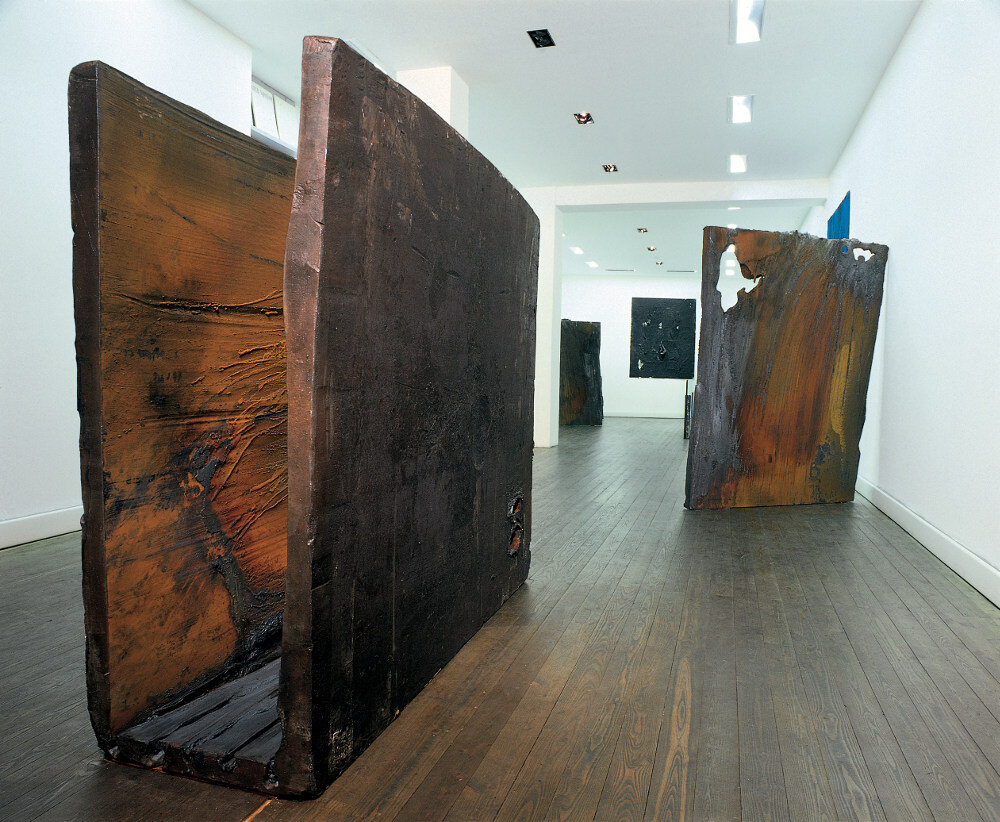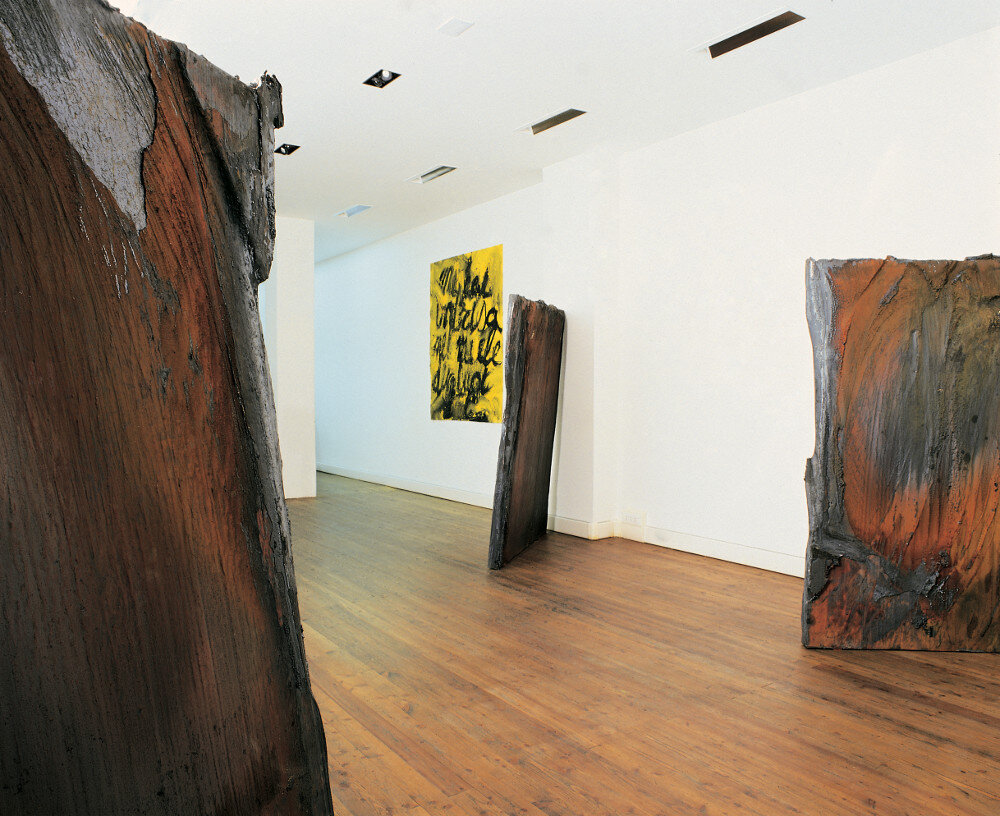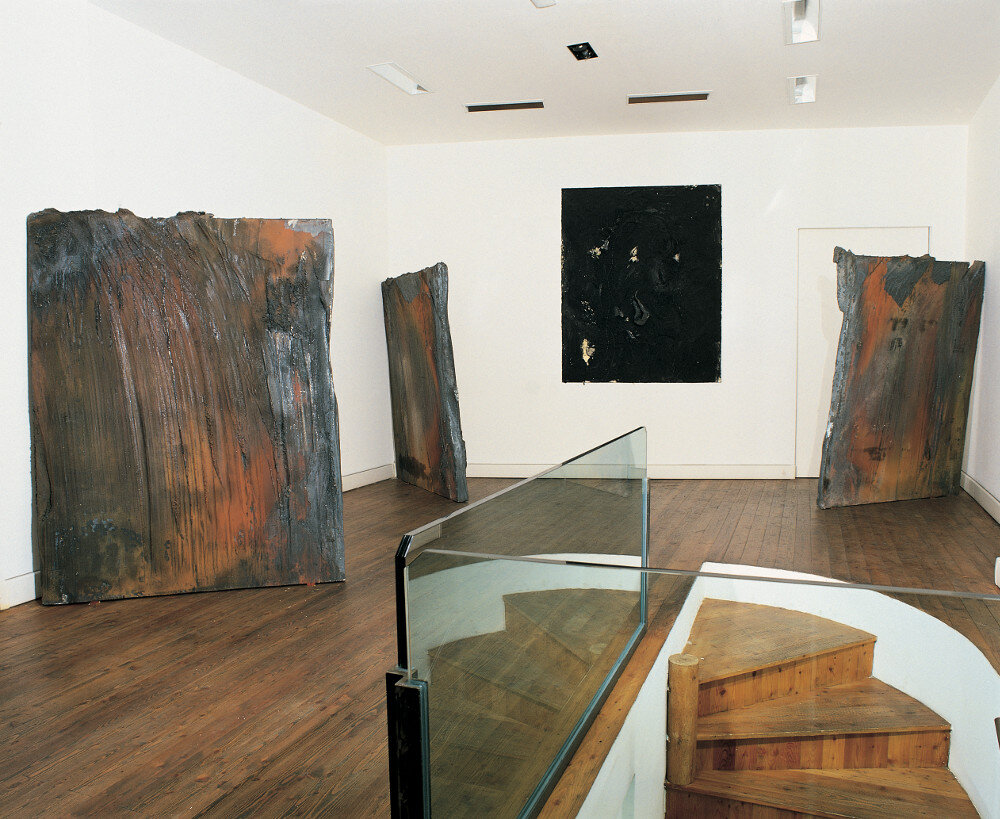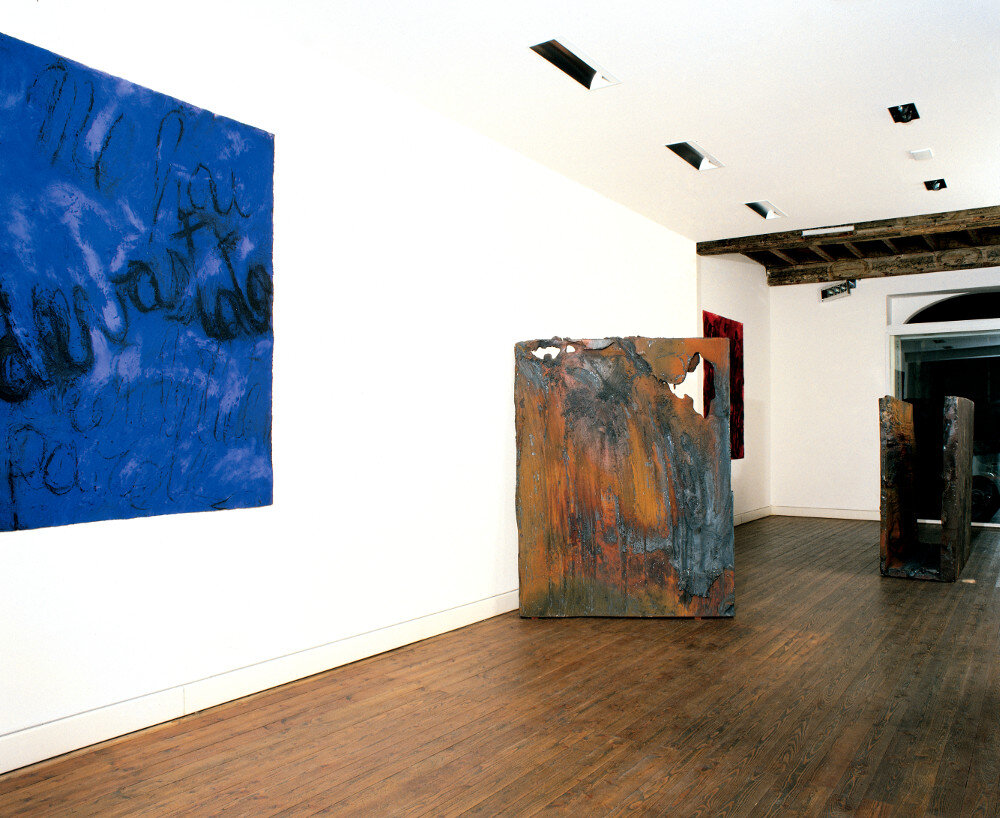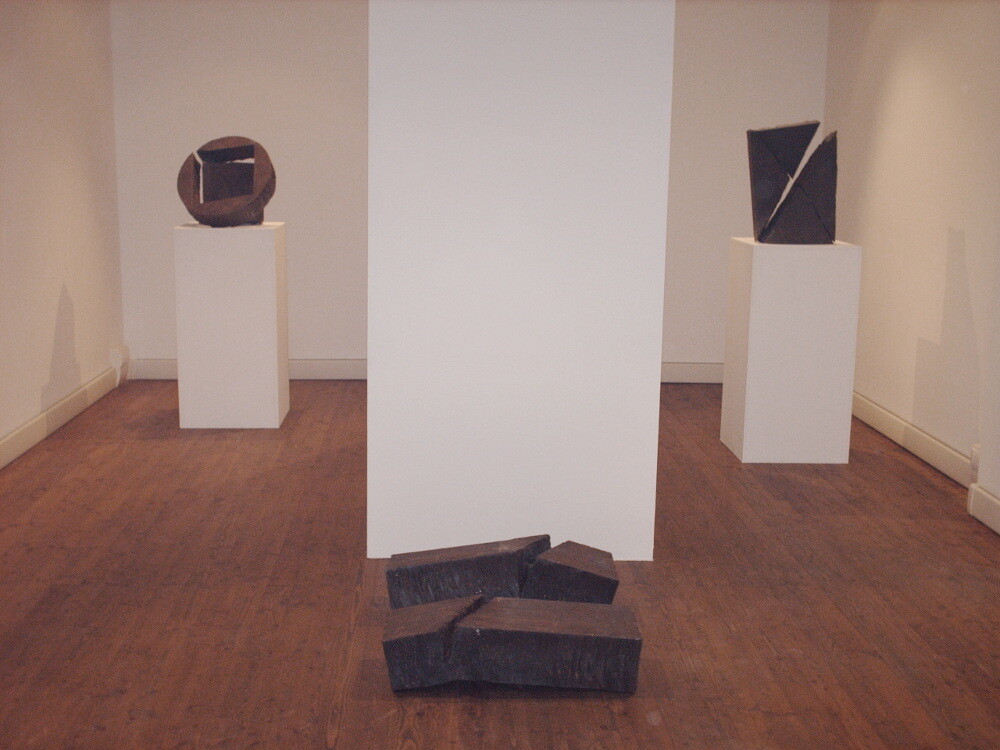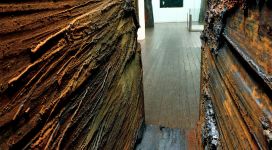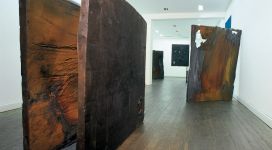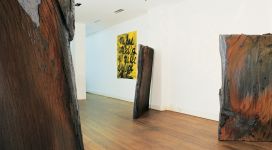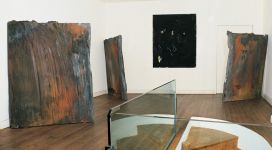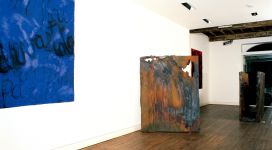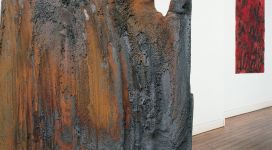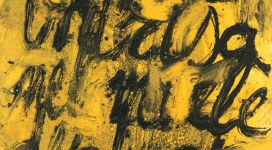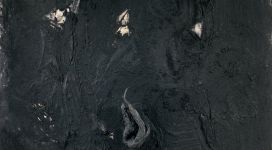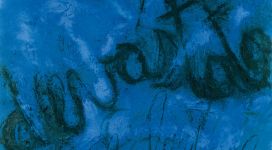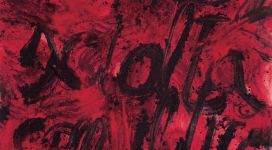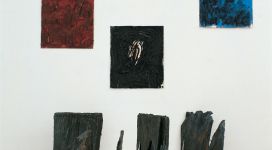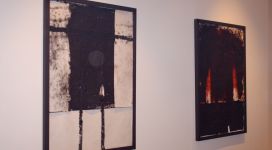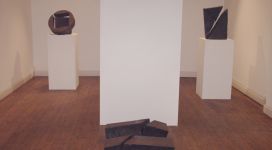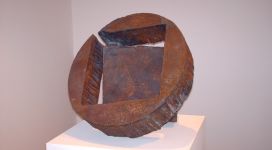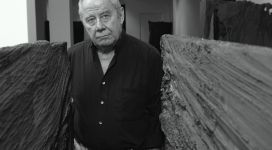| GIUSEPPE SPAGNULO | Biography | |
| Cantico | Catalog | |
| curated by SILVIA PEGORARO and ANDREA ALIBRANDI | ||
| 28 october 2006 – 20 january 2007 |
Galleria Il Ponte launches the autumn 2006 exhibition season with a personal show dedicated to one of the most important internationally recognised Italian sculptors, Giuseppe Spagnulo. For this Florentine show, the artist has created a large piece on the upper floor of the gallery.
The piece consists of an imposing block of steel, forged into a shape measuring 140x170x60cm. The artist has used a blowtorch on the central part, dividing it up into sections and giving those sections body. The central part of the piece is hollowed out inside, making it look like the cover of some gigantic book: this is displayed at the entrance to the gallery. Behind it, dispersed, invading the space all round, are enormous pages, marked by the cruel force of the fire that has cut them off completely. Onto these pages of a hypothetical “book of iron and fire” are attached four large monochrome pages –magenta, cadmium yellow, black and cobalt–made of superimposed pieces of paper which in their turn take on a sculptural form, through the use of volcanic sand and pigments. On this dense material one can just about see letters, words, phrases from the sacred book of the Torah. The pages get mixed up and float away into space as a Cantico, making an enormous mass of material into a light element, dense with vibrations and hinted meanings.
Next to this piece, in the lower gallery, there is a collection of small and medium-sized sculptures (Ferro, Piano, Cerchio spezzato) geometric figures cast in iron with imperfect outlines, in which the artist intervenes on the material with unexpected movements and creates an instable equilibrium. Spagnulo always tries to make the mass into something noble: taking away specific weight and enriching it with content full of thought and emotion. In addition to these sculptures there are some large pieces from the last few years executed on paper, with volcanic sand and black pigments.
